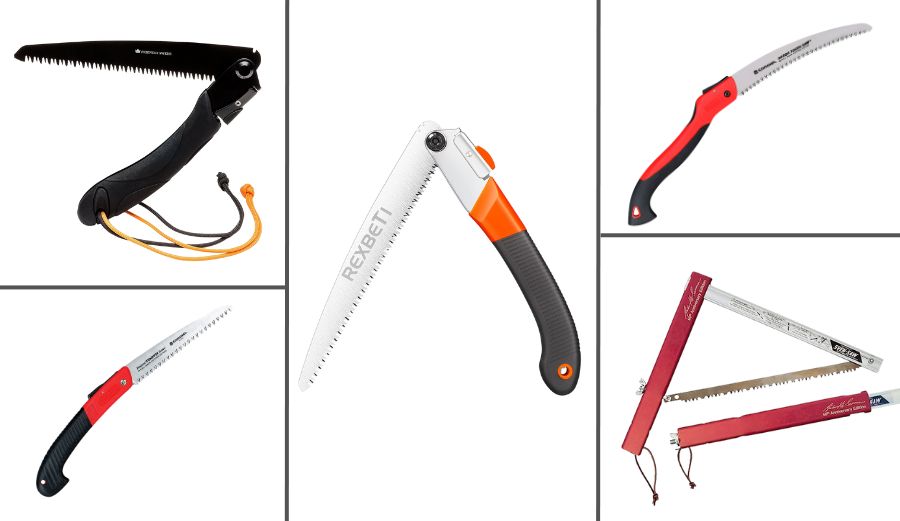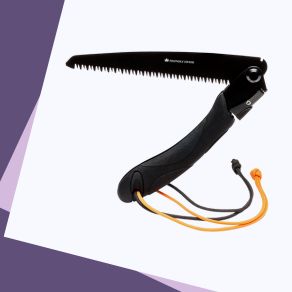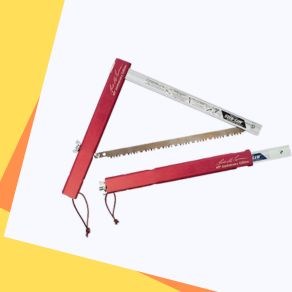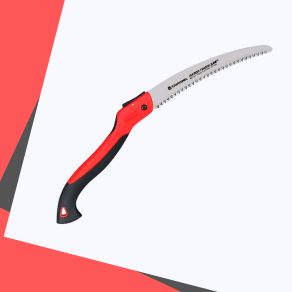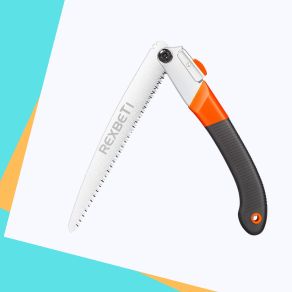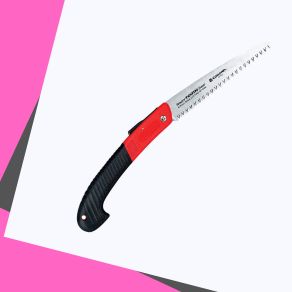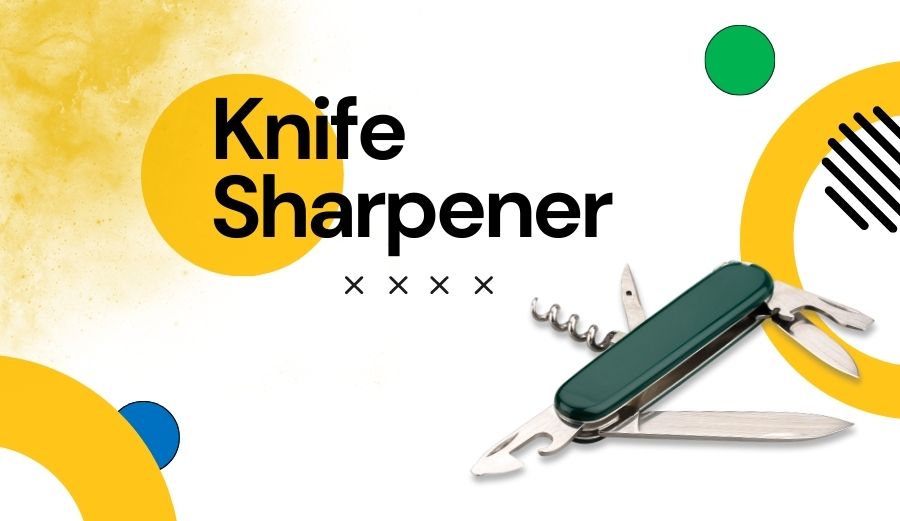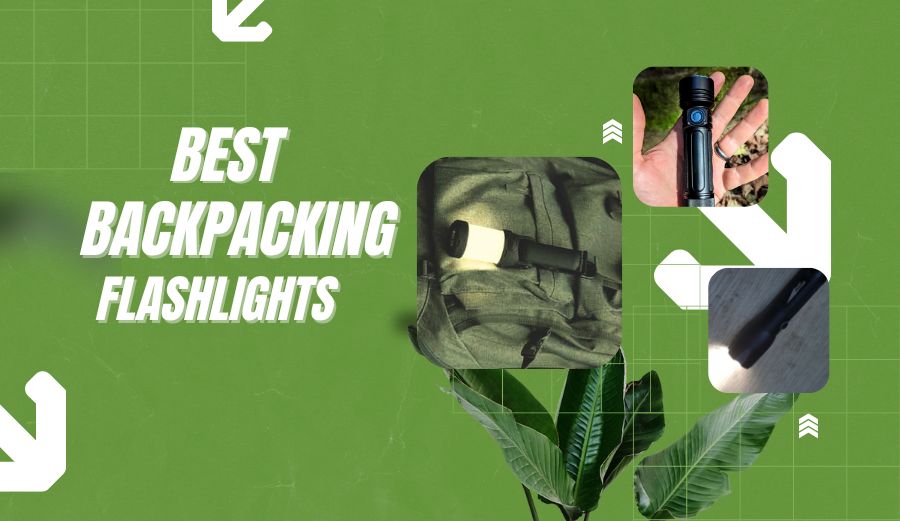From Forest to Firewood: Choosing the Best Backpacking Saw for Your Journeys
Embark on wilderness expeditions with confidence using the Best Backpacking Saw. This essential tool ensures smooth, hassle-free cutting, elevating your outdoor adventures to new heights.
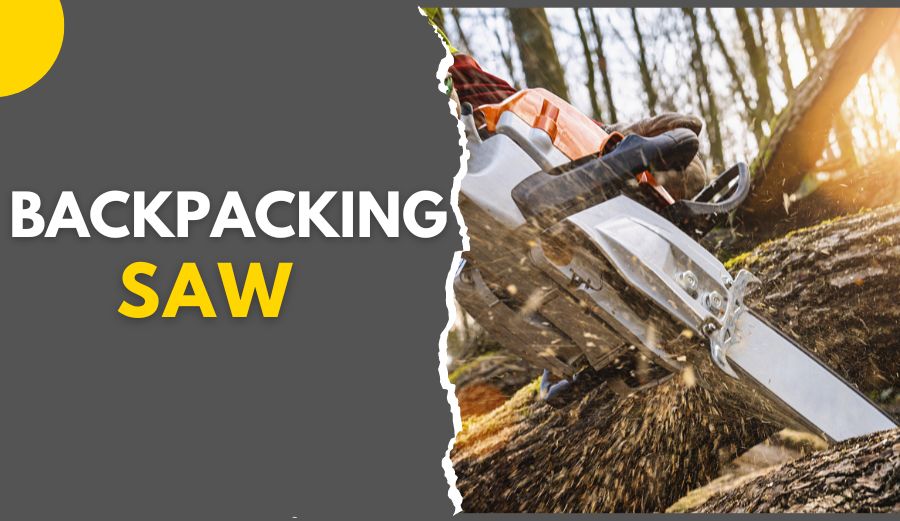
When venturing into the great outdoors, the right tools make all the difference. The Best Backpacking Saw is an indispensable companion for explorers, offering unmatched cutting prowess in a compact form.
Whether crafting survival shelters, preparing firewood, or clearing pathways, this versatile tool’s reliability and portability redefine outdoor efficiency.
Say goodbye to bulk and hello to precision – the Best Backpacking Saw is here to redefine your wilderness experience, one precise cut at a time.
Table of Contents
ToggleA Closer Look at Backpacking Saw Variants: Which to Choose?
When selecting the ideal backpacking saw, your first decision lies in choosing the right type. Camping saws are available in three distinct forms, each with unique attributes:
1. Pocket Chainsaws Efficiency meets compactness with pocket chainsaws. These ingenious tools boast a chain-like cutting mechanism that swiftly slices through branches. Their lightweight design and collapsible nature make them perfect for minimalists seeking quick-cutting solutions.
2. Folding Saws strike a balance between portability and cutting power. Their hinged design allows for easy storage and unfolds into a sturdy cutting tool, enabling precise trimming of various wood sizes. A versatile choice for hikers who value versatility without compromising performance.
3. Bow Saws When tackling larger wood sizes, bow saws rise to the occasion. They are known for their robust frames and longer blades and effortlessly handle thicker branches. Although less compact, their capacity to cut through sizable logs makes them a reliable companion for more intensive backpacking ventures.
Each saw type presents distinct advantages and caters to varied packing preferences and applications. Your choice ultimately hinges on the specific demands of your outdoor expeditions.
When adventure calls, and the great outdoors beckon, the Folding Hand Saw with Ergonomic TPR Handle stands ready as your trusty companion. Crafted for campers, hikers, and outdoor enthusiasts, this portable wonder boasts a 10-inch blade made of premium steel, featuring a low-angle tooth pattern for exceptional cutting performance. With an ergonomic TPR handle ensuring comfort during extended use, let’s delve into the highs and lows of this versatile tool.
Pros:
- Lightweight and Portable: Perfectly suited for your on-the-go adventures, this saw won’t weigh you down.
- Durability and Quality: Crafted carefully, the saw’s construction ensures it’s ready for rugged outdoor environments.
- Cutting Precision: The sharp blade with its low-angle tooth pattern guarantees efficient and effective cutting.
- Ergonomic TPR Handle: Comfortable handling allows extended usage without discomfort.
- User-Friendly: Simple and straightforward, this tool is easy to pick up and use without a steep learning curve.
- Affordability: Offering quality without breaking the bank, it’s an intelligent investment for outdoor enthusiasts.
Cons:
- Power Consideration: While capable, it might not rival some of the more powerful saws on the market.
- Blade Maintenance: Keeping the blade sharp might require more effort due to its specific design.
- Wet Conditions: The handle’s TPR material can be slippery when wet.
User Opinion
User feedback echoes the product’s strengths – it’s hailed as an ideal companion for light outdoor tasks. The comfortable grip and cutting precision are standout features, allowing users to tackle various tasks without fatigue. Some users noted that while it may not replace heavy-duty saws, its portability and ease of use make it a go-to choice for quick cuts and light projects.
Final Verdict
The Folding Hand Saw with Ergonomic TPR Handle emerges as a practical and efficient tool for those seeking convenience and quality outdoor equipment. While it might not wield the power of more robust options, its user-friendly nature, lightweight design, and affordability more than compensate.
Keeping it sharp and using it for its intended purpose ensures it shines in various outdoor scenarios. So, if you’re searching for a reliable, portable saw that delivers value beyond its price, this saw deserves a spot in your outdoor gear collection.
Enter the world of effortless outdoor woodwork with the Sven-Saw 15″ Folding Saw – a versatile companion built to tackle the demands of backpacking, camping, and hiking. With its 15″ tempered Swedish steel blade and anodized aluminum handle, this folding saw delivers the perfect blend of sharpness, durability, and portability. Let’s dive into the details and uncover why this tool might become your new favorite outdoor asset.
Pros:
- Compact & Light: Seamlessly fitting into your outdoor gear arsenal, this folding saw is a lightweight wonder.
- Sharp & Resilient Blade: Equipped with a 15″ tempered Swedish steel blade, it’s ready to easily conquer various wood types.
- Anodized Aluminum Handle: Lightweight yet sturdy, this handle ensures comfortable use without compromising strength.
- Triangular Frame Design: The saw’s unique triangular frame adds rigidity and stability for precise cutting.
- Fast Cutting: The closely spaced teeth guarantee swift and efficient woodwork, enhancing your outdoor experience.
- Spare Wingnut & Washer: Prepared for the unexpected, the saw comes with replacement parts for peace of mind.
Cons:
- Assembly Challenge: Some users might need help with the assembly and disassembly.
- Blade Maintenance: Sharpening the blade could pose a challenge due to its specific design.
- Power Consideration: While excellent for its size, it might not match the power of larger saws.
User Opinion
Users have hailed the Sven-Saw 15″ Folding Saw as an indispensable tool for outdoor enthusiasts. The combination of its lightweight construction, sharp blade, and rigid frame design has won over many. It’s easy handling and swift cutting action have transformed woodwork into an enjoyable and efficient task. While some assembly hurdles exist, those who’ve embraced this tool appreciate its overall performance and portability.
Final Verdict
In the world of folding saws, the Sven-Saw 15″ stands out as a champion of portability and efficiency. This tool fits the bill if you seek a lightweight and compact solution that doesn’t compromise on cutting performance. With its sharp blade, stable design, and included spare parts, it’s primed to elevate your outdoor woodworking endeavors.
While the assembly process might pose a minor challenge, its benefits to your outdoor toolkit far outweigh this consideration. For a reliable, lightweight, and durable folding saw that makes light work of wood, the Sven-Saw 15″ Folding Saw is a commendable choice.
When precision pruning is paramount, the Corona Tools 10-Inch RazorTOOTH Folding Saw emerges as the ultimate single-hand solution. Engineered for efficiency, this pruning saw boasts a 10-inch curved blade with 3-sided razor teeth – perfect for effortlessly slicing through branches up to 6 inches in diameter.
Crafted with high-carbon steel and impulse-hardened for enduring sharpness, this saw is a testament to quality. Comfort reigns supreme with its co-molded handle, ensuring ease of use during extended sessions. Let’s dive into the details of this pruning prowess.
Pros:
- Razor-Sharp Teeth: The 3-sided razor teeth redefine cutting efficiency, making quick work of small to medium branches.
- High-Carbon Steel Blade: Crafted to last, the high-carbon steel blade retains its sharpness over time, guaranteeing consistent performance.
- Co-Molded Comfort: The comfortable handle design ensures a solid grip and ease of use, even during prolonged tasks.
- Compact Portability: The folding blade seamlessly tucks into the handle, making transport and storage a breeze.
Cons:
- Price Consideration: While delivering exceptional performance, the investment might be slightly higher than some alternatives.
- Durability Comparison: Some users find it slightly less durable than other options.
User Opinion
Users have applauded the Corona Tools 10-Inch RazorTOOTH Folding Saw for its precision and performance. The razor teeth have proven to be a game-changer, making pruning tasks efficient and satisfying. The durable blade and the comfortable handle have earned the saw praise for its overall usability and effectiveness. While some may find the price point a bit steep, those who value quality and longevity recognize the tool’s worth.
Final Verdict
The Corona Tools 10-Inch RazorTOOTH Folding Saw rises to the occasion for pruning tasks that demand finesse and accuracy. With its razor-sharp teeth, high-carbon steel blade, and comfortable handle, it’s a force to be reckoned with in the world of single-hand pruning saws.
The convenience of its folding mechanism further solidifies its place as a go-to tool for outdoor enthusiasts. While the initial cost might give pause, those who prioritize long-lasting performance and efficient pruning will find the investment well justified.
If you’re searching for a pruning saw that marries precision with durability, the Corona Tools 10-Inch RazorTOOTH Folding Saw is a top contender worthy of a place in your toolkit.
When the need for heavy-duty cutting arises, the REXBETI Folding Saw strides onto the scene with an 11-inch blade ready to conquer the toughest challenges. Crafted from robust SK-5 steel, renowned for its durability and sharpness, this saw packs a punch with its 7 teeth per inch configuration, making light work of thick branches and wood.
Embracing comfort and functionality, its rubber-coated handle guarantees a secure grip, even in damp conditions. Whether camping, hiking, or tackling garden tasks, the REXBETI Folding Saw is a versatile outdoor companion.
Pros:
- SK-5 Steel Might: The heavy-duty blade’s SK-5 steel construction ensures longevity and exceptional sharpness.
- Efficient Cutting: With 7 teeth per inch, this saw effortlessly powers through dense wood and branches.
- Grip Assurance: The rubber-coated handle offers comfort and maintains a secure hold, even in wet environments.
- Compact Storage: Embracing portability, the saw folds up neatly for convenient storage and transport.
Cons:
- Unfolding Bulk: Some users find the saw a tad bulky when unfolded, potentially affecting ease of use.
- Handle with Care: The sharp teeth require careful handling to avoid accidental cuts.
User Opinion
Users have heralded the REXBETI Folding Saw as a formidable tool, particularly for outdoor pursuits and gardening tasks. Its impressive cutting power and comfortable handle have garnered praise for efficiency and ease of use. While its unfolding size might raise a minor concern, the saw’s performance overshadows this aspect. As users have attested, this saw proves itself as an invaluable asset for various cutting needs.
Final Verdict
The REXBETI Folding Saw isn’t just a tool – it’s a force to be reckoned with. With its heavy-duty SK-5 steel blade, efficient tooth configuration, and user-friendly design, it ticks all the boxes for outdoor enthusiasts seeking reliability. Whether you’re venturing into the wilderness or pruning your garden, its performance stands unrivaled.
While its unfolding size might pose a slight inconvenience, it’s a minor trade-off for the cutting prowess it delivers. The REXBETI Folding Saw is a testament to quality, durability, and functionality, all bundled into a single package. Look no further if you’re searching for a cutting companion that doesn’t compromise power, comfort, or convenience. This saw has got your back.
Enter the realm of single-hand precision with the Corona Tools 7-Inch Razor Tooth Folding Saw – an exquisite pruning saw designed to redefine your cutting experience. Featuring a 7-inch curved blade with 3-sided razor-sharp teeth, this tool is a testament to cutting efficiency.
Impulse-hardened for enhanced strength, the blade is crafted from high-carbon Japanese SK5 steel, ensuring a long-lasting sharpness that stands the test of time. Boasting an ergonomically designed co-molded handle with a pistol grip, this saw provides comfort and control in a single package.
Pros:
- Razor-Sharp Efficiency: The 3-sided razor-tooth blade guarantees swift, precise, and clean cuts, making light work of branches.
- High-Carbon Japanese SK5 Steel: The blade’s construction ensures longevity, maintaining sharpness over numerous uses.
- Ergonomic Comfort: The co-molded handle with a pistol grip prevents hand slippage and provides comfort and control.
- Safety Lock Mechanism: The blade securely locks into place when closed, mitigating the risk of injuries.
Cons:
- Size Consideration: The 7-inch blade might be limiting when cutting larger branches.
- Price Comparison: While offering exceptional quality, it is pricier than other folding pruning saws.
User Opinion
Users have praised the precision and functionality of the Corona Tools 7-Inch Razor Tooth Folding Saw. The sharpness of the blade, coupled with the ergonomic handle design, has led to efficient and comfortable pruning experiences.
The safety lock mechanism has also earned appreciation for its added security. While the price might deter some, those who value quality and cutting prowess deem the investment worthwhile.
Final Verdict
For those searching for pruning precision, the Corona Tools 7-Inch Razor Tooth Folding Saw shines as a gem in the toolshed. Its razor-sharp blade, high-carbon steel construction, and ergonomic handle design place it at the forefront of single-hand pruning solutions.
Whether you’re a homeowner, landscaper, or arborist, this saw’s capabilities extend to a range of cutting tasks. While the price might be a consideration for some, the quality and efficiency it delivers make it a prime candidate for those who prioritize excellence.
Suppose you’re after a compact tool that excels in precision and durability. In that case, the Corona Tools 7-Inch Razor Tooth Folding Saw is a cutting companion that doesn’t disappoint.
Backpacking Saw Buyer's Guide: Navigating Your Cutting Companion Selection
Exploring the Need: Is a Saw Really Worth Carrying?
Before adding any tool to your outdoor gear, assessing its necessity is crucial. Will a backpacking saw truly enhance your experience? Tailor your decision to your planned activities – tasks like gathering firewood, trail-clearing, and shelter-building can significantly benefit from the right saw.
Sizing Up Efficiency: How Big Should My Saw Be?
Strike a balance between size and performance when choosing a backpacking saw. While larger saws might offer more power, they can also become cumbersome. Smaller options are lightweight but may need more strength for thicker branches. Align the saw’s size with your tasks to ensure optimal utility without unnecessary weight.
Task-Specific Selection: What Do I Want My Saw to Do? The saw’s purpose determines its effectiveness. Will you be trimming twigs or tackling larger logs? Opt for a higher tooth count per inch (TPI) for fine cuts and a lower TPI for thicker wood. A clear understanding of your cutting needs guides the perfect choice for your outdoor endeavors.
Key Features to Consider: What To Look Out For
- Precision Engineering: Seek blades crafted from premium steel (SK-5, Japanese steel) for sharpness and durability. Unique tooth designs like razor teeth can amplify cutting efficiency.
- Handle Ergonomics: Embrace handles with ergonomic designs for comfort during extended tasks. Textured or rubber-coated handles provide a secure grip, especially in damp conditions.
- Optimal Portability: Folding mechanisms offer compactness, making them favored among backpackers. Prioritize secure and user-friendly folding means.
- Efficiency Amplification: Tailor the blade’s TPI to your needs – higher TPI for finesse and lower TPI for thicker wood. This influences both the speed and effort required.
- Weight-Balance Dilemma: Strive for a saw that’s lightweight yet capable. This ensures easy transport while accommodating your cutting requirements.
- Safety in Design: Some saws feature locking systems to prevent unintended openings. This safeguard ensures safe transport and handling.
- Longevity and Upkeep: Durable materials guarantee the saw’s lifespan. While some blades are easy to sharpen, others might demand specialized tools.
In summary, your choice of a backpacking saw holds the potential to revolutionize your outdoor ventures. Assess your needs, tailor your decision to your tasks, and prioritize a design that merges power with comfort. The ultimate aim is to equip yourself with a versatile tool that seamlessly complements your adventures, elevating outdoor tasks into triumphant accomplishments.
Final Thoughts
In the realm of outdoor essentials, the Best Backpacking Saw emerges as a silent hero, ready to transform your wilderness encounters. It’s the epitome of utility, from crafting shelter to conquering firewood challenges.
Let your choice resonate with your needs, striking a harmonious balance between cutting power and portability. Armed with the right saw, you’re poised to turn every outdoor escapade into a triumph of efficiency and satisfaction.

